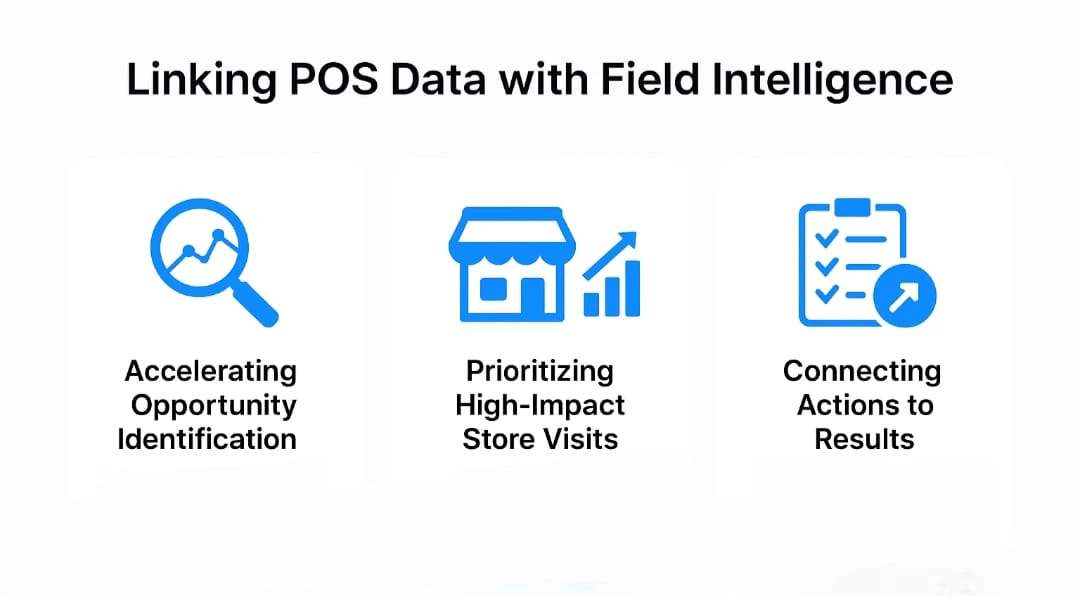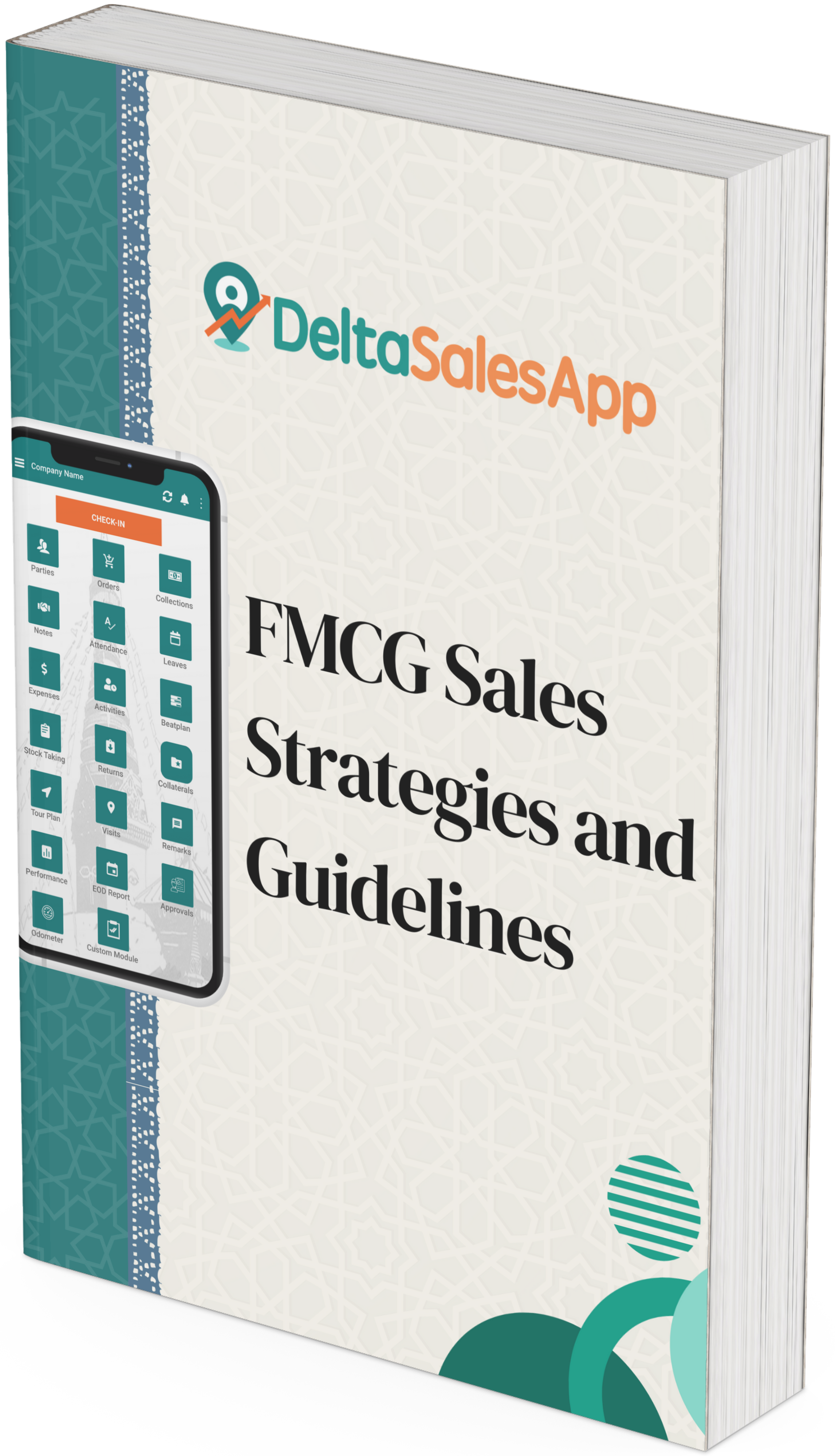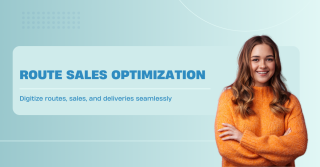Unlock the Power of POS Data for Smarter Retail Execution

In today’s highly competitive consumer goods industry, Point of Sale (POS) data is emerging as a strategic asset for smarter retail execution. Great products alone don’t guarantee success; brands must ensure flawless execution at the shelf — placing the right product in the right place at the right time. What empowers this precision? The intelligent use of POS data.
POS data captures real-time sales transactions, providing brands a direct lens into shopper behaviors and market trends. Yet, many brands fall short in leveraging this powerful data asset. The real breakthrough comes when POS data is integrated with technologies like Field Sales Force Automation, enabling real-time decision-making and optimized execution strategies.
📊 The Critical Role of POS Data in Retail Execution
Retail execution refers to the in-store activities ensuring that a brand’s products are available, correctly displayed, competitively priced, and effectively promoted. Poor execution — such as stockouts, incorrect pricing, or misaligned displays — leads to lost sales and weakened brand perception.
When used strategically, Point of Sale (POS) data enables:
Granular visibility into store-level product performance.
Real-time alerts to address execution errors.
Predictive analytics to forecast demand and fine-tune inventory.
Actionable tasks delivered directly to field reps.
But spreadsheets and static reports aren’t enough. Embedding POS data into daily operations via Field Sales Force Automation unlocks its full potential.
🌉 Bridging the Gap Between POS Data and Execution
Despite widespread access, many brands underutilize Point of Sale (POS) data. Research shows 92% of CPG leaders believe they could improve data use, yet only 28.5% effectively leverage it in-store. This gap stems from:
Data Overload without actionable insights.
Siloed Systems disconnecting data from daily operations.
Manual Field Processes slowing down execution.
Delayed Responses to real-time retail issues.
Without smart tools like retail execution software, POS insights remain dormant.
🔗 Linking POS Data with Field Intelligence
Modern Field Sales Force Automation platforms allow brands to merge POS data with field-level insights. This integration is further enhanced by retail execution software, which streamlines how data is captured, analyzed, and acted upon in the field.

This powerful combination transforms retail execution by:
Accelerating Opportunity Identification
Detect mismatches like stockouts or display issues by aligning sales dips with field data.Prioritizing High-Impact Store Visits
Use POS data to rank stores by urgency and revenue potential. Automate visit lists for maximum ROI.Connecting Actions to Results
Track which field activities (like display fixes or stock refills) are boosting sales. Real-time correlation enhances strategic clarity.
🚀 Maximizing Retail Execution with POS Data
To achieve execution excellence using Point of Sale (POS) data, brands should:
Add Context with Field Observations
Combine transactional data with qualitative inputs like:Shelf photos
Out-of-stock reports
Competitor analysis
Planogram compliance
Optimize Territory and Resources
Geographic POS data helps reassign field reps to areas with high potential. Focus on:Declining high-volume stores
New store launches in emerging markets
Empower Field Reps with Real-Time Insights
Mobile apps synced with POS data give reps:Store-level sales trends
Instant alerts for execution gaps
Live performance metrics via sales performance tracking tools
Build Strategic Retailer Partnerships
Share data insights with retailers to:Showcase mutual growth opportunities
Audit promotional success
Identify and close execution gaps
Foster a Culture of Data-Driven Execution
Democratize access to POS data through:Dashboards
Automated reports
Team-wide performance tools
💡 The Competitive Advantage of POS Data + Automation
By integrating Point of Sale (POS) data into their execution strategies using Field Sales Force Automation, brands gain:
Higher Sales Uplift through timely corrections
Improved Efficiency by prioritizing high-value actions
Stronger Retailer Relations via data-backed collaboration
Faster Response Times from real-time alerts
Continuous Optimization through performance feedback loops
🏆 Final Thoughts: Data-Driven Retail Execution for the Win
The future of CPG success lies in aligning data, tech, and field intelligence. Brands that treat Point of Sale (POS) data as a live operational asset — rather than just a reporting tool — will outperform the competition.
With smart retail execution software and connected field systems, companies can turn shelf-level execution into a predictable, measurable growth engine. It’s time to move beyond guesswork and embrace real-time precision.
Ready to transform your retail execution with data-driven power? Start now with Field Sales Force Automation.
❓FAQs
1. What is Point of Sale (POS) data in retail?
Point of Sale (POS) data refers to information collected at the moment a customer makes a purchase. It includes product details, time and date of sale, quantity, store location, and price. For brands, POS data provides real-time insights into consumer buying behaviors, product performance, and sales trends across retail locations.
2. Why is POS data important for retail execution?
POS data plays a crucial role in retail execution by helping brands understand what is selling, where it’s selling, and under what conditions. When linked with field execution activities, it allows brands to quickly identify issues like stockouts, poor merchandising, or pricing errors—and take corrective actions to maximize sales opportunities.
3. What is Retail Execution?
Retail execution refers to the operational activities brands perform at retail stores to ensure products are properly stocked, displayed, promoted, and priced. Good retail execution ensures better shelf presence, stronger brand visibility, and improved consumer satisfaction, leading to higher sales.
4. What challenges do brands face when using POS data for retail execution?
Common challenges include:
- Data overload without clear action plans.
- Lack of real-time integration with field teams.
- Manual, error-prone reporting processes.
- Difficulty correlating execution activities with sales outcomes. Using technologies like Field Sales Force Automation (SFA) platforms helps overcome these hurdles.
5. What is Field Sales Force Automation (SFA)?
Field Sales Force Automation (SFA) refers to software tools that help automate and optimize the activities of field sales teams. In the context of retail execution, SFA solutions link POS data with real-time field activities, enabling brands to prioritize store visits, track compliance, monitor execution quality, and drive faster actions.
🔍 Also Check
👉 Find Sales Opportunities Using Store Chain POS Data
👉 3 Main Features Every Retail Execution Platform Must Have
🌟See What Users Say About Us!
Delta Sales App, trusted by businesses for streamlining sales processes and boosting productivity, is highly rated on top review platforms.
See what real users have to say about us:









